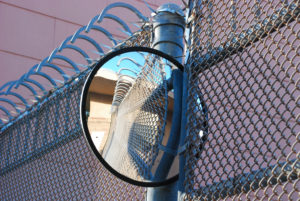Written by: Greg Ellifritz
Many of you who have been reading my work for a long time recognize that I have been vocally critical of the “lockdown” process in the past, especially in the case of school shootings. While I have been critical, I don’t have any problem with the idea of lockdown itself….I just think that poorly implemented lockdowns will cause more student deaths than other available response strategies in an active killer event.
Lockdowns can work well and have saved lives in the past. They work best when the following criteria are met:
- A fast responding police intervention
- The rooms the students are using for lockdown are truly capable of being secured
- There is an escape route in the lockdown location
- Teachers have planned and trained to deal with unexpected contingencies (like breaches, fires, explosions, and medical emergencies)
Lockdowns could be a good solution for responding to a school shooter if all of the above criteria are met. But I rarely see a school that covers all of those bases. The usual response is to lock down in a room that can’t be well secured and has no emergency exits. It is a rare school district that properly trains and equips its staff to deal with emergency contingencies. Furthermore, the idea of a school lockdown in a district that has a 20-30 minute police response time is laughable. Cops won’t get there in time to save the students. Locking them down merely concentrates all of the victims into convenient areas, allowing the killer to “shoot fish in a barrel.”
If all of my above criteria are met, I think lockdowns are an excellent response. If they aren’t, lockdowns can lead to more dead students and school staff.
Despite my thoughts on the topic, lockdowns remain the single most popular response tactic that schools use to deal with an active killer. I recognize that I am not likely to change that fact. If we are going to have lockdowns, we need to do them right.
Triggering the lockdown has been a contentious issue. Who has the authority to trigger a lockdown? What procedure is used to notify staff and students? Who has the authority to break a lockdown? Are the triggering words broadcast is plain language, or is a code used? All of these are questions that need to be examined before relying on lockdown as a defensive strategy.
Most schools will trigger a lockdown with a verbal announcement over the school’s PA system. Some schools don’t want to alert the killer as to what is happening, so they use a code word. Principals will get on the PA system and say something like “Code Red. Code Red.” Students and teachers are instructed to secure classroom doors and seek cover if they hear the announcement.
The use of code words is becoming problematic. There are two major problems with non-specific lockdown instructions:
1. Students are exposed to other schools of thought on the issue. With the “Run Hide Fight” strategy being promulgated by various government agencies, students may choose to flee (rather than locking down) in the event a lockdown is triggered. That might be a good tactic. It might be fatal. It depends on the situation.
- 2. Lockdowns are triggered for other reasons besides school shooters. “Soft lockdowns” are triggered when there is a dangerous situation outside nearby (like a fleeing armed robber in the area). Lockdown is also used when a parent attempts to enter a school to take custody of his or her child outside of the bounds of a custody agreement. In both of these locations, a fleeing student might be exposed to more danger than one who follows the lockdown instructions.
Lockdown triggering should not be coded. We need differing response options for differing risks. The lockdown should be announced by a person of authority. That person should use plain language and explain exactly what he/she wants the students and staff to do. A simple “Code Red” is no longer adequate.
A proper lockdown command should sound something like this:
“An armed robber has been reported outside the school. All exterior doors should be locked and students should seek shelter in the nearest secure classroom. No one should exit the building until an “all clear” is given by police.”
or
“Someone is shooting students in the East wing. All students should flee via the west doorways and seek shelter. If anyone cannot flee, they should secure themselves in the closest classroom. The police are responding. Get out of the building or keep your doors locked until an all clear announcement is given by police. If students are injured, staff should notify the authorities via 911.”
Do you see how such specific instruction is more valuable than any generic code word? Code words can be forgotten. Plain language is what we want to use for maximum efficiency in a crisis.
Any school shooter already knows that as soon as shots are fired, a lockdown will be triggered. You aren’t fooling anyone with your fancy codes. Provide specific clear instructions that are tailored to the expected threats. Don’t rely on any cryptic code words.
If you work in an office, how is your lockdown triggered? What about your child’s school? Is lockdown in plain language or triggered by a code? If it is a code, your school or employer has not kept up with the best practices in active shooter response.
Provide them with a copy of this article. Encourage them to change their outdated procedures. Our kids deserve better.


